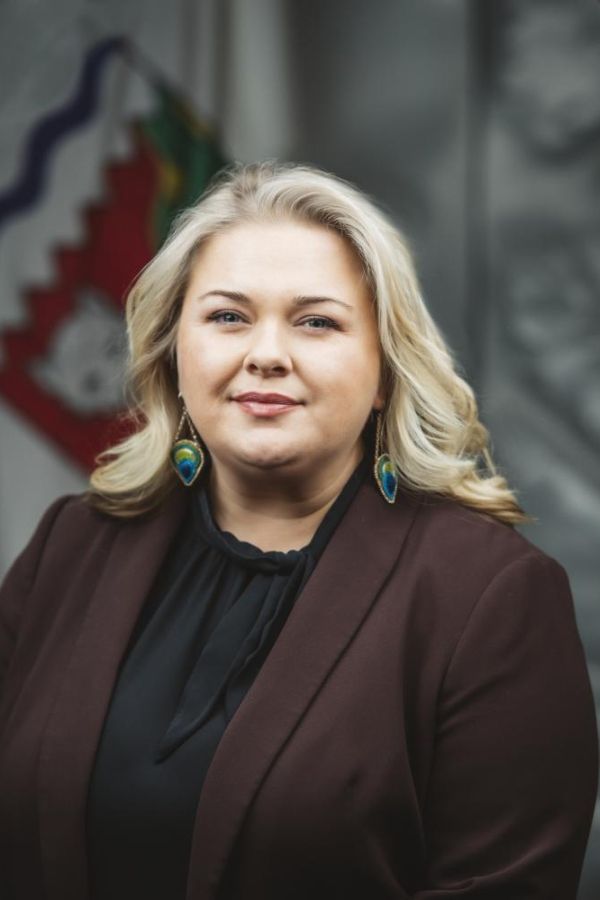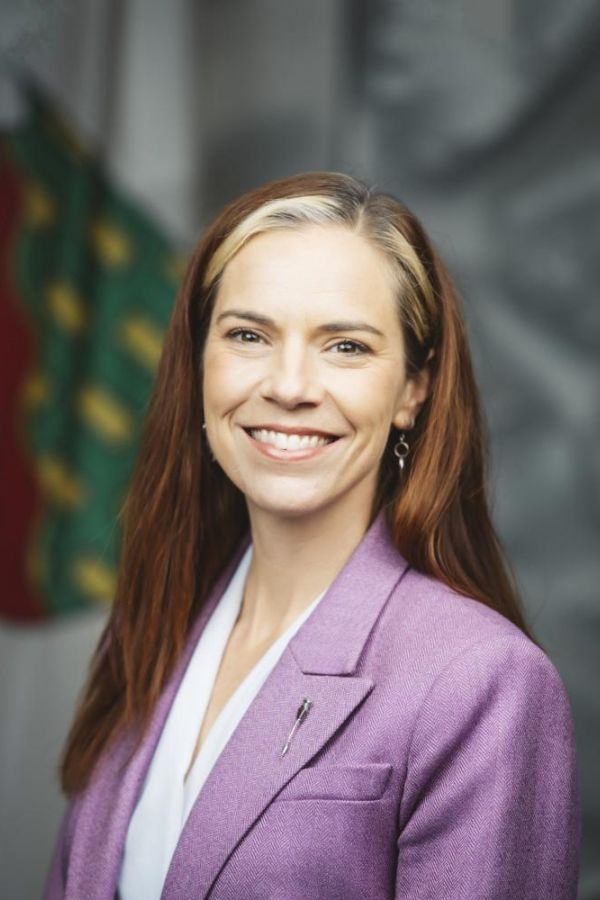Debates of March 2, 2021 (day 64)

Thank you, Minister. Mr. Vandenberg.
Thank you, Madam Chair. The $1.6 million is the staff costs for GNWT staff and for the inspection department, for the group. Yes, indeed. Thank you, Madam Chair.

Thank you. Member for Deh Cho.

Mahsi, Madam Chair. We are using the GNWT staff, so we are paying back to the GNWT with that money. I also note, down on the contract services, what does that entail, that amount there, $1.7 million?

Thank you. Minister.
Thank you, Madam Chair. That was asked earlier, but I'm going to see if ADM Brennan can repeat that. Thank you, Madam Chair.

Thank you. ADM Brennan.
Thank you, Madam Chair. I don't have a list of all that entails, but I can give the Member some of the items that it would include. It would include -- jeepers, where do I start -- air, marine, and safety. They have the contract to work at airports, so some of the building work that happens at airports, upgrades and whatnot, that's contracted out. Compliance and licensing, they contract out the maintenance of their drive system. Basically, it's just various contracts throughout all the different divisions that add up to that $1.7 million. Thank you, Madam Chair.

Thank you. Member for Deh Cho.

Mahsi, Madam Chair. Most of your contracts for all those services, are they contractors based in the NWT, northern contractors? Mahsi.

Thank you. Minister.
Thank you, Madam Chair. I'm looking at the line item there for contract services in the expenditure category. You'll see a variance there of $6.2 million in some of the contracting services. I just want to say that $4 million is absorbed within the MTS deficit in order to stay within its authorized stabilization limits, and then the other $2 million is a department-absorbed fuel services division deficit in order to stay within its authorized stabilized limits. That's what the variance in the contract is. Thank you, Madam Chair.

Thank you. Member for Deh Cho.

Mahsi, Madam Chair. I got confused there because I see a line item of $1.7 million, and she is talking about $4 million here and there. I'm just wondering. It's the contract services on page 248, Madam Chair. Mahsi.

Thank you. Minister.
Thank you, Madam Chair. Red means decrease, so there is a decrease in previous years to now. I'll get ADM Brennan to speak a little bit more about the line item.

Thank you, Minister. We only have black and white, though. Mr. Brennan.
Thank you, Madam Chair. I have colour; I've got the good stuff. In terms of the $1.7 million for contract services, we don't have the breakdown by northern and southern, but the majority of this work is for airports, air, marine, and safety, and most of that work happens in our small communities where our 26 airports are located outside Yellowknife. Unfortunately, we don't have the breakdown right now. Most of that money is spent in the North, but unfortunately, we just don't have that right now. Thank you, Madam Chair.

Thank you, Mr. Brennan. Member for Deh Cho.

Mahsi, Madam Chair. Contract services, that's not for any specialized services or anything, is it? What type of contract work does this entail? I think you may have answered that before; I'm not sure.

Thank you, Member. Minister.
Thank you, Madam Chair. Yes, we did answer that already, but if the Member likes, we can get ADM Vandenberg to answer it again.

Thank you. Mr. Vandenberg.
Thank you, Madam Chair. For the most part, these are contracted services, and I believe ADM Brennan mentioned airports. The majority of this money is spent with northern contractors and northern businesses.

Thank you. Member for Deh Cho.

I just wasn't sure what type of work that entailed and if the small contractors can access it. Anyway, I heard talk when I was working with Infrastructure back in 2018-2019 about MTS getting their own maintenance personnel. My question is: did that happen? Mahsi.

Thank you, Member. Minister.
Thank you, Madam Chair. I will get ADM Vandenberg to talk in a little bit more detail about MTS. Thank you.

Thank you. Mr. Vandenberg.
Thank you, Madam Chair. In the interest of time, I will be brief on this one. With MTS, with the program, we are committed to hire through PSAC, the union. We're working with three bargaining units there, and MTS does, through the staffing contractor, bring on their own maintenance people, whether that be maintenance people for the shipyard, for the facilities, the mobile equipment, the vessels. Thank you, Madam Chair.

Thank you, Mr. Vandenberg. Are there any further questions from Members under programs and services? Member for Hay River South.

Thank you, Madam Chair. Can the Minister just maybe clarify air, marine, and safety and the $4.309 million? What does that number encompass? What is the money used for? Thank you, Madam Chair.

Thank you, Member. Minister.
Thank you, Madam Chair. The air, marine, and safety is responsible for some of the planning, monitoring, managing airport and ferry infrastructure, which includes five ferry vessels, four ferry crossings, and runways and lighting at 26 airports. It also provides strategic direction to be able to optimize commercial development at airports and is responsible for developing system-wide asset management, maintenance and operations standards, and administering these safety management system so we can comply with some of the federal legislation. Yes, that's what that is. Thank you, Madam Chair.

Thank you, Minister. Member.

Thank you, Madam Chair. I'd just like to talk a bit about marine and the ferries. What we have here is, I think, an aging fleet. They're probably upwards of 40, 50 years old. At some point, we're probably just patching them and giving them a little bit more life. I would like to ask if there's been any planning with respect to building new vessels or doing any real major retrofits to the ones that we have in the fleet right now? Thank you, Madam Chair.

Thank you. Minister.
Thank you, Madam Chair. The Member is right. He sees these aging infrastructure every day when he probably drives by the Marine Transportation Service in Hay River. We continuously look for federal funding to be able to get better improved tugs and better improved, to comply with some of the Transportation Canada rules around what is required for some of our aging infrastructure. To speak more specifically about this is ADM Vandenberg to talk a little bit more about where we're at. Thank you, Madam Chair.

Thank you. Mr. Vandenberg.
Thank you, Madam Chair. In fact, that is correct. The vessels are aging. It's fair to say that they're used in fresh water, and so the hulls do have some life. We certainly have to comply with Transport Canada inspections every year, and the vessels have to be seaworthy in order to be able to operate. We have drawn upon federal funding, and we look to federal funding. We've re-engined a couple of vessels, spending some significant money on those ferries. However, indeed, we need to look to the future to consider future capitalization of replacements when the time comes. Thank you.

Thank you. Member for Hay River South.

Thank you, Madam Chair. One of the concerns I have is: with the amount of ice that came down, say for instance, the Liard last fall, the integrity of the hulls of those ferries could very well be compromised. It resulted in the ferry there being stuck out in the ice, and it had to be rescued. That's why I am just wondering why or if we are going to look at upgrading them, maybe upgrading the hulls to account for possible, for running them longer during the fall and when there's ice out there. In reality, it's a safety issue, and if there would have been vehicles on that ferry when it did get away there and get stuck, there could be some real liability there for the government. Is there anything that we're doing to ensure that the safety of the passengers on those ferries are looked after? Thank you, Madam Chair.

Thank you, Member. Minister.
Thank you, Madam Chair. Absolutely. This is something that we need to look at, and I mentioned earlier about the stricter requirements from Transport Canada about having single hulled barges, tugs versus double hulled, and the amount it would cost to be able to look at that. Even just looking at some of our ferries across the Northwest Territories and the need to, perhaps, have a look, every year, we do a little bit of work, and I hear the Member's concern about what happened in one of the communities by Fort Simpson and how we need to ensure that we have safety as the utmost respect for these tugs and our staff, as well. Thank you, Madam Chair.

Thank you, Minister. Member.

Thank you, Madam Chair. Just previously, we were talking about energy initiatives, so I'm wondering if there's any planning with respect to converting some of these ferries to electric and with a diesel backup because the amount of diesel they go through even though they're running for part of the year, it may be something that is worth trying. I would like to ask the Minister if that's being considered, and if not, why? Thanks, Madam Chair.

Thank you, Member. Minister.
Thank you, Madam Chair. That makes a lot of sense, but there's a lot of work to be able to put some of these projects into play. I am going to look to ADM Vandenberg to see if that's something the department thought of in terms of how we, to be able to efficiently do things better. Thank you, Madam Chair.

Thank you, Minister. Mr. Vandenberg.
Thank you, Madam Chair. At this time, we haven't gone into it in great depth. We'd be prepared to look at that in future, however. Certainly, there could be a possibility for federal funding for the right program for that type of application. Thank you, Madam Chair.














